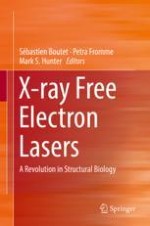2018 | OriginalPaper | Buchkapitel
10. Advances in Structure Determination of G Protein-Coupled Receptors by SFX
verfasst von : Benjamin Stauch, Linda Johansson, Andrii Ishchenko, Gye Won Han, Alexander Batyuk, Vadim Cherezov
Erschienen in: X-ray Free Electron Lasers
Aktivieren Sie unsere intelligente Suche, um passende Fachinhalte oder Patente zu finden.
Wählen Sie Textabschnitte aus um mit Künstlicher Intelligenz passenden Patente zu finden. powered by
Markieren Sie Textabschnitte, um KI-gestützt weitere passende Inhalte zu finden. powered by
